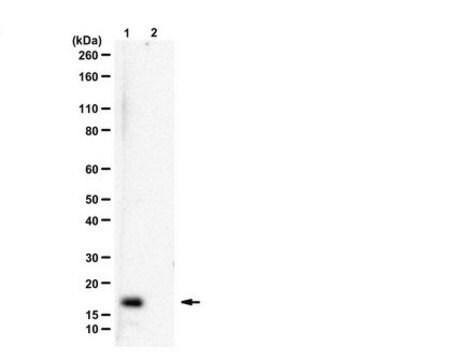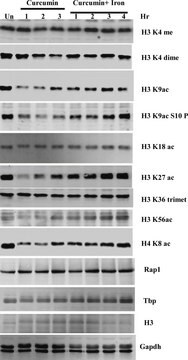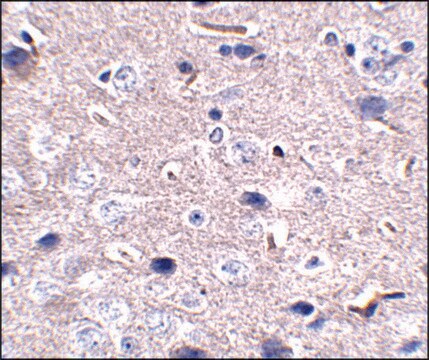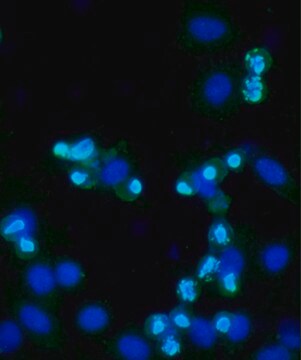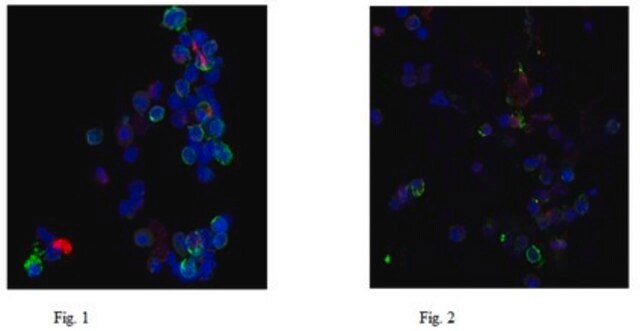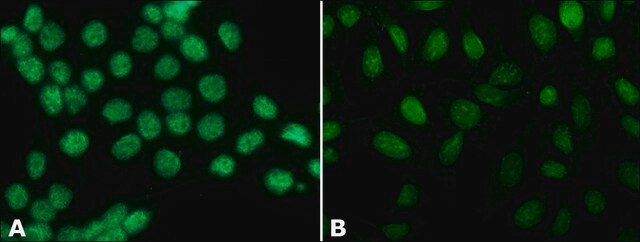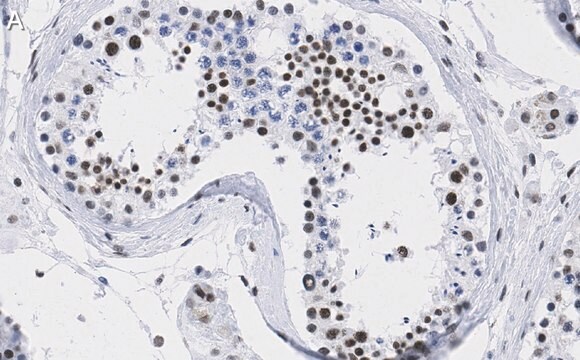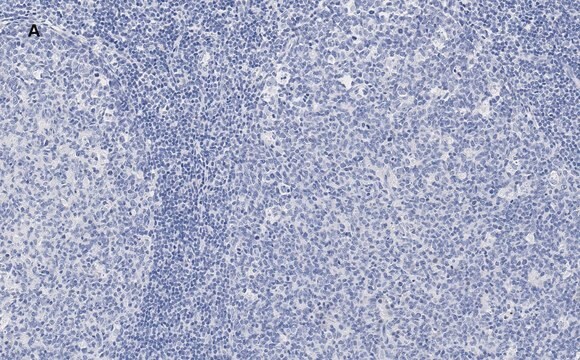Opis ogólny
Histon H3.3 (UniProt: P84243) jest kodowany przez gen H3F3A (znany również jako H3.3A, H3F3, PP781, H3F3B, H3.3B) (Gene ID: 3020) u człowieka. Jest to wysoce konserwatywna forma histonu H3, która zastępuje konwencjonalny H3 w szerokim zakresie nukleosomów w aktywnych genach. Histon H 3.3 stanowi dominującą formę histonu H3 w nie dzielących się komórkach i jest włączany do chromatyny niezależnie od syntezy DNA. Histon H3.3 jest związany z aktywnie ekspresjonowanymi genami zarówno u zwierząt, jak i roślin. Jest on głównie wzbogacony w pobliżu miejsc zakończenia transkrypcji (TES) genów i pozytywnie związany z transkrypcją. Histon H3 zawiera główną domenę kulistą i długi N-końcowy ogon i jest zaangażowany w strukturę nukleosomów struktury "koralików na sznurku". N-końcowy ogon histonu H3 wystaje z kulistego rdzenia nukleosomu i może podlegać kilku różnym rodzajom modyfikacji epigenetycznych, które wpływają na procesy komórkowe. Modyfikacje te obejmują kowalencyjne przyłączanie grup metylowych lub acetylowych do aminokwasów lizyny i argininy oraz fosforylację seryny lub treoniny. Na przykład acetylacja na lizynie 10 (H3K9ac; początkowa metionina usunięta) osłabia metylację na arg9 (H3R8me2s), a acetylacja na lizynie 19 (H3K18ac) i lizynie 24 (H3K24ac) sprzyja metylacji na arg18 (H3R17me). Fosforylacja Ser11 (H3S10ph) przez kinazę Aurora B jest kluczowa dla kondensacji chromosomów i progresji cyklu komórkowego podczas mitozy i mejozy. Fosforylacja w Ser11 przez RPS6KA4 i RPS6KA5 jest ważna podczas interfazy, ponieważ umożliwia transkrypcję genów po stymulacji zewnętrznej, takiej jak mitogeny, stres, czynniki wzrostu lub promieniowanie UV i skutkuje aktywacją genów, takich jak c-Fos i c-Jun. Mutacje w histonie H3.3 są związane z wysokim odsetkiem złośliwych nowotworów mózgu u dzieci. Zmutowany histon H3.3 zaburza epigenetyczne modyfikacje potranslacyjne w pobliżu genów zaangażowanych w procesy nowotworowe i funkcjonowanie mózgu. Mutacje glicyny 34 do tryptofanu (G34W) w histonie 3.3 zostały powiązane z rozwojem guza olbrzymiokomórkowego kości (GCTB), a także z zaburzeniem mozaikowym charakteryzującym się guzami chromochłonnymi i przyzwojakami. (Ref.: Amary, F., et al. (2017). Am. J. Surg. Pathol. 41(8); 1059-1068).
Specyficzność
To królicze przeciwciało poliklonalne wykrywa zmutowaną formę G34W histonu H3.3 i nie reaguje z dzikim typem H3.3.
Immunogen
Epitop: nieznany
Liniowy peptyd sprzężony z KLH odpowiadający 8 aminokwasom z N-końcowego regionu ludzkiego histonu H3.3 z mutacją G34W.
Zastosowanie
Anti-Histone H3.3 G34W, nr kat. ABE1839, jest wysoce specyficznym króliczym przeciwciałem poliklonalnym skierowanym przeciwko zmutowanej formie histonu H3.3 G34W i zostało przetestowane do stosowania w Western Blotting.
Research Category
Epigenetics & Nuclear Function
Jakość
Evaluated by Western Blotting in HEK293 cells transfected with Histone H3.3 G34W mutation.
Western Blotting Analysis: 1 µg/mL of this antibody detected Histone H3.3 G34W in HEK293 cells transfected with Histone H3.3 with G34W mutation.
Opis wartości docelowych
Zaobserwowano ~17 kDa; obliczono 15,33 kDa. Niescharakteryzowane pasma mogą być obserwowane w niektórych lizatach.
Postać fizyczna
Format: Oczyszczony
Oczyszczone królicze przeciwciało poliklonalne w buforze zawierającym 0,1 M Tris-Glicyna (pH 7,4), 150 mM NaCl z 0,05% azydkiem sodu.
Affinity Purified
Przechowywanie i stabilność
Przechowywać przez 1 rok w temperaturze 2-8°C od daty otrzymania.
Inne uwagi
Stężenie: Należy zapoznać się z arkuszem danych dla konkretnej partii.
Oświadczenie o zrzeczeniu się odpowiedzialności
Unless otherwise stated in our catalog or other company documentation accompanying the product(s), our products are intended for research use only and are not to be used for any other purpose, which includes but is not limited to, unauthorized commercial uses, in vitro diagnostic uses, ex vivo or in vivo therapeutic uses or any type of consumption or application to humans or animals.
Ta strona może zawierać tekst przetłumaczony maszynowo.
